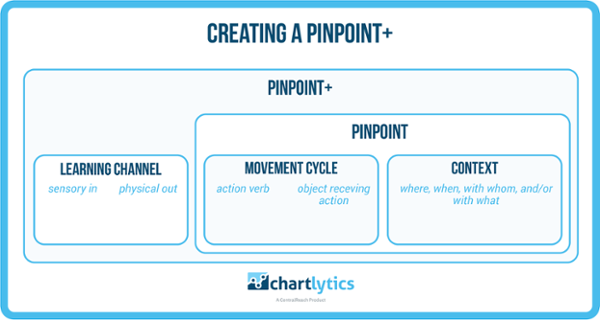Written by Rick Kubina
The grand science of behavior, behavior analysis, has made remarkable strides helping people live better lives. The founder of contemporary behavior analysis, B. F. Skinner, often wrote how science can improve human behavior and society at large. For example, one of his papers described problems with the American educational system and potential solutions.
We could solve our major problems in education if students learned more during each day in school. That does not mean a longer day or year or more homework. It simply means using time more efficiently” (Skinner, 1984).
Behavior analysis has demonstrated through applied experimental research how it can measurably enhance educational performance and learning.
Students with Disabilities on the Rise
Many demographic studies show certain disabilities categories have increased dramatically over the years. None has shown such rapid growth as students with autism spectrum disorders (ASD). The most recent prevalence data from the Centers for Disease Control and Prevention place autism as occurring in 1 out of 59 children, up 15% from 2014.
Children with ASD present a number of behavior, social, and cognitive challenges. And unfortunately, a recent systematic review and meta-analysis of the long-term overall outcome of ASD in adolescence and adulthood presented disappointing results (Steinhausen, Jensen, & Lauritsen, 2016). Only 19.7% of the participants in the studies had a good outcome, with “Normal or near-normal social life and functioning satisfactorily at school or work.” The vast majority (i.e., 47.7%) of participants had poor (“Severely handicapped, but some potential for social progress”) or very poor outcomes (“Unable to lead any kind of independent existence”).
Applied behavior analysis has answered the call for producing superior outcomes for students with autism. Not only does the science of behavior boast many experimental studies that show how to change behavior and affect learning, but many more programs and curricula have started to come to market. The PEAK Relational Training System (or PEAK) represents one very popular and promising curriculum available to behavior analysts.
PEAK
PEAK has received increasing attention in the behavior analytic research and practice as a comprehensive treatment model for improving language skills and “learning to learn.” PEAK offers four modules (i.e., Direct Training, Generalization, Equivalence, and Transformation) with each containing a series of programs.
PEAK also boasts a number of established and emerging research studies demonstrating efficacy. Interested readers can peruse the studies here.
A program like PEAK has many strengths and great versatility. PEAK offers an assessment, a curriculum (i.e., four modules or books), data recording sheets, instructions for error corrections, and goal criteria for individual programs. However, PEAK users could benefit from a measurement system such as Precision Teaching.
Precision Teaching has four steps: Pinpoint, Record, Change, and Try Again. Each step has a specific purpose. Namely, elevating the detection (Pinpoint), counting, (Record), decision making (Change), and recursive problem solving (Try Again). All the steps come together and present critical information in the form of carefully measured behavioral data. The data then allow the behavior analyst to understand progress in a very precise manner.
Pinpointing has specific appeal to behavior analysts as a way to establish a highly detectable, countable, and actionable behavioral target. The following section describes how to create a pinpoint for PEAK. For further reading on pinpoints, read our blogs here or here.
Creating a Pinpoint+
The specific program “Hands Still” will serve as an example of how pinpointing can augment PEAK.
Hands Still (PEAK Direct Training Module 1B) specifies its goal as a situation where a person (e.g., behavior analyst, teacher, parent) asks another person (e.g., child, student) to keep his or her hands still. The program sheet describes the materials needed for the teaching interaction, instructions for the caregiver or teacher, and typical stimuli helpful for the session.
Pinpointing derives its form from the goal, materials, or stimuli suggested for the program, and the directions for the person who will implement Hands Still.
The working model for the pinpoints+ specifies the following information necessary for translation.
- Action verb (what will the child do)
- Objection receiving the action (what object will receive the action or active verb)
- Context (details further contextualizing the movement cycle)
- Learning channel (the sensory Inputs and the physical Outputs specifying stimulus control)
What action verb would capture Hands Still? Having one’s hands still suggests the absence of behavior. Pinpointing reminds the creator to view all behavior as active and seek out an active verb. “Places” offers a good choice for an action verb. Places means to “put in a particular position.”
Places what? The action verb needs an object. Place “hands” completes the movement cycle. At its core, the movement cycle places hands allows a behavior analyst to count the behavior with precision. “Places hands” has a clear beginning, the child placing his or her hands, and an equally obvious ending, the child moving his for her hands from the placed position.
Adding context to “places hands” further enhances the countability of the targeted behavior. As indicated earlier, context can cover where the behavior occurs, when it occurs, with whom it occurs, or with what it occurs with.
The instructions in Hands Still specify that the behavior analyst will tell the child “Hands still.” Then the child must emit the behavior. Therefore, places hands could become:
- Places hands on table when told to do so (where and when)
- Places hands in lap when told to do so (where and when)
- Places hands in pocket when told to do so (where and when)
With added context, the behavior analysts and RBTs using PEAK can count the behavior with high precision. Furthermore, the behavior analysts can accurately deliver reinforcement for a specific topography. Targeting “places hands on table” makes clear what to reinforce and what to expect will happen more often in the future. “Places hands in pocket” or “places hand in lap” did not receive reinforcement and therefore will not come under control of the verbal stimulus “hands still” unless specifically singled out.
Also, the child just placing his or her hands on the table without the instruction from the behavior analyst or RBT would not receive reinforcement. The selected context helps clarify when the reinforcement event will happen.
The plus (+) in the pinpoint+ refers to the learning channel: a pinpoint plus a learning channel, thus the pinpoint+. The Sensory In involved with the verbal stimulus “Hands still” would come from the following options: Free, touch, taste, sniff, see, hear, feel. With the behavior analyst saying “Hands still”, the child would “hear” the command.
The Out or Output classifying the movement cycle component for the pinpoint+ could fall under any of the following: Aim, do, draw, emote, mark, match, say, select, tap, free, write. “Places hands” best fits the “do” output. “Do” classifies bodily movements as “do” something.
“Hear-do” forms the input-output for stimuli and behavioral classification. A child who learns something under the hear-do learning channel set has a very specific behavior established. The more discrepant the channel set from the original, the less likely the behavior will occur. For instance, see-do means the child saw a visual stimulus and did something (e.g., saw another child blow bubbles with her straw and imitated the behavior, see-do). A child who heard a verbal stimulus and did something would not likely perform a see-do classified behavior due to the specificity of reinforcement.
As an example, a child learns one-step motor imitation, PEAK Direct Training Module 4B. The pinpoint+ for the behavior: See-do imitates one step action as demonstrated by teacher. Subsequently telling the child to perform the behavior (e.g., “Touch your arm”) operates under different learning channels: Hear-do touches arm when told by teacher.
Bringing it all together, a pinpoint+ for Hands Still could appear as “Hear-do places hands on table when told to do so.”
The clarity, exactitude, and precision of using a pinpoint+ for the “Hands Still” program confer significant advantages. Detecting and counting the behavior occur with higher accuracy due to the sharpness of the target. And the focus of reinforcement also improves as the pinpoint+ distinctly communicates to the behavior analyst when to apply the reinforcing event.
PEAK users would also experience the value of enhanced tracking and problem solving. Enhanced tracking occurs because each pinpoint+ spells out exactly what the child has learned. Learning to place hands on a table when told to do so means the child has learned one behavior successfully. Then, learning to place hands in pocket might not only happen faster but would represent a second behavior brought under stimulus control.
Conclusion
Precision Teaching has four steps, all of which would help PEAK users precisely measure performance and learning changes for selected programs. Pinpoints advance superior outcomes in several ways. Perhaps most important, behavior analysts have a precision target advancing behavioral detection and communication among team members. PEAK presents a compelling option for improving language and other important skills for learning, problem solving, and communication. The addition of pinpointing and Precision Teaching may foster even greater applied and experimental discoveries.
References
Steinhausen, H. -C., Mohr Jensen, C., & Lauritsen, M. B. (2016). A systematic review and meta‐analysis of the long‐term overall outcome of autism spectrum disorders in adolescence and adulthood. Acta Psychiatrica Scandinavica, 133, 445-452. DOI: 10.1111/acps.12559
Skinner, B. F. (1984). The Shame of American Education. American Psychologist, 39, 947-954. DOI: 10.1037/0003-066X.39.9.947.








